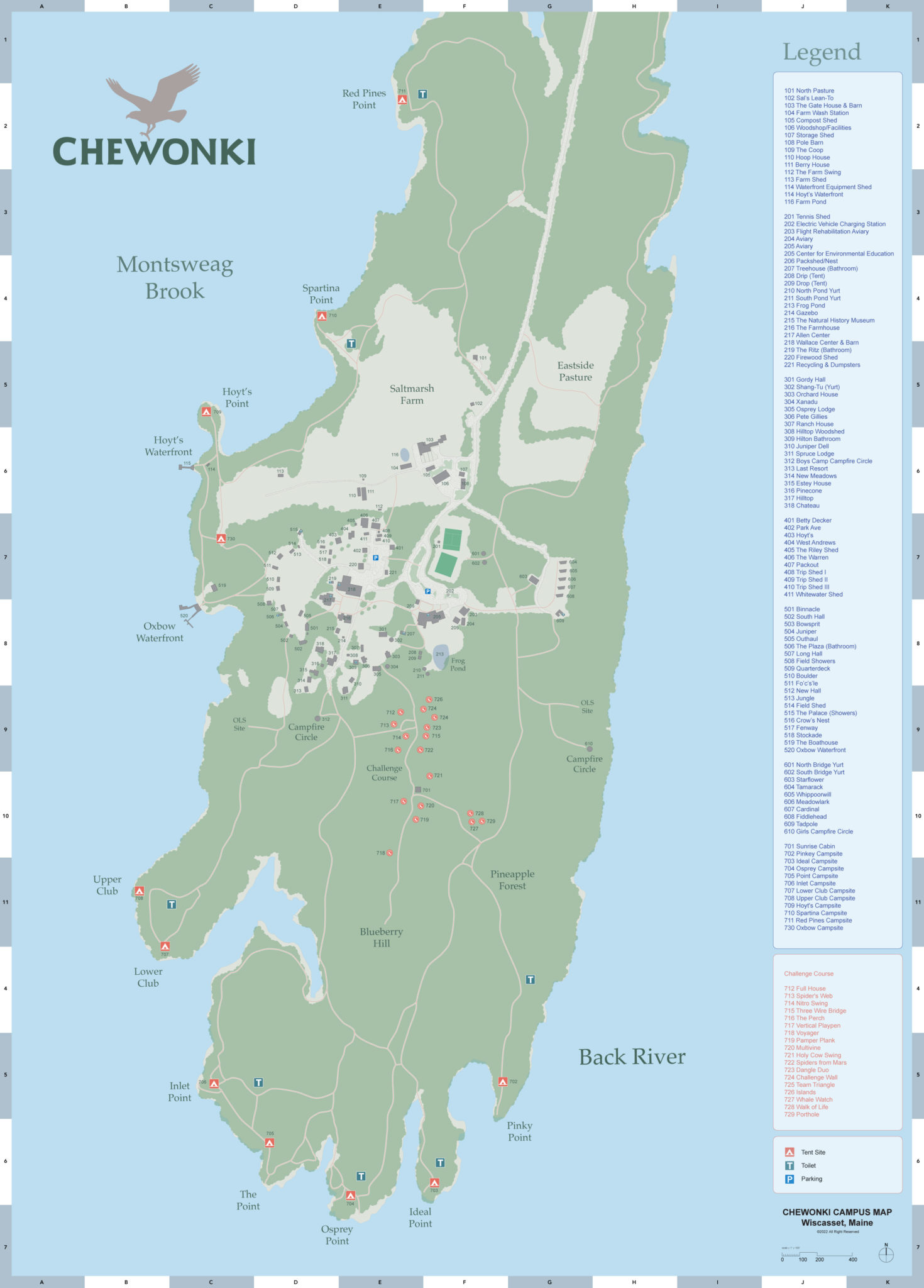Our campus is situated on a 400-acre peninsula in midcoast Maine, with three and a half miles of stunning rocky coastline. The campus has become a recognized model for sustainable management of natural resources. Our practices in the forests and on the farm, as well as in our classrooms and community spaces, are exemplary and award-winning. We have put ideas about sustainable living and renewable technologies into practice for decades, and many of our participants have first-time, hands-on experiences that inform a lifetime of behavior.
Our waterfront is situated within two hundred yards of our central quad, with ideal facilities for swimming and boating. The property sits on Montsweag Bay, a protected tidal inlet located several miles upriver from the mouths of the Kennebec and Sheepscot rivers.
Our land supports a diverse array of ecosystems including fields, forest, rocky shoreline, salt marsh, pond and farmland – a rich tapestry for fun and learning. More than five miles of trails connect campsites, scenic points, and historical features on Chewonki Neck. Our participants are encouraged to explore throughout the year, on foot, by snowshoe, or on skis. Nearby, other Chewonki lands offer additional miles of trails.
Our farm illuminates the interconnectedness of our lives. Through growing and eating our own food, we strive to have a complete relationship with the land. Saltmarsh Farm is a small, diversified organic farm that is greatly prized by our community. Its primary mission is to educate students while producing food, wood products, and fiber for the community. The farm consists of approximately 25 acres of open land and 150 acres of woodlot. One acre is cultivated for vegetable production and the remainder is comprised of pasture, hay fields, buildings, trees and stone walls. The gardens are carefully planned and intensively managed, producing 15,000 pounds of vegetables annually for our dining hall. We also raise livestock for milk, meat, and fiber, as well as timber for firewood and some saw logs.
Living Spaces
Nearly all of Chewonki’s living spaces are designed with conservation in mind. During the 2006-2007 school year, students built a new cabin under the supervision of our lands & buildings manager and our head carpenter. Designed to be as efficient as possible, Gordy Hall features large south-facing windows to allow in light and warmth during the winter, photovoltaic panels to provide electricity, light tubes in the roof for light during the day, and a seven-layer insulation system in the walls that includes recycled cotton fiber and cellulose. Nearly all of the lumber in the cabin comes from Maine and the inner walls are untreated by chemicals. Like all of our cabins, Gordy Hall is heated by a wood stove in the winter.
Renewable Energy
Photovoltaic, biomass, passive solar, hydro, pedal power, draft horse, and solar heat are some of the renewable energy sources that we use every day. Our students and participants rely on these energy sources for hot showers, electricity, warmth, and transportation.
Composting and Recycling
One of the first lessons our students learn upon arrival is the importance of composting and recycling and how to take advantage of Chewonki’s waste management resources. We compost all of our food scraps and use single-stream recycling, which allows us to combine all paper, plastics, glass, and aluminum for sorting at an off-site facility. Students are responsible for separating out returnable cans and bottles, and the deposit money from these is put into our scholarship fund. Food scraps are taken to the farm daily where they are used for compost.
